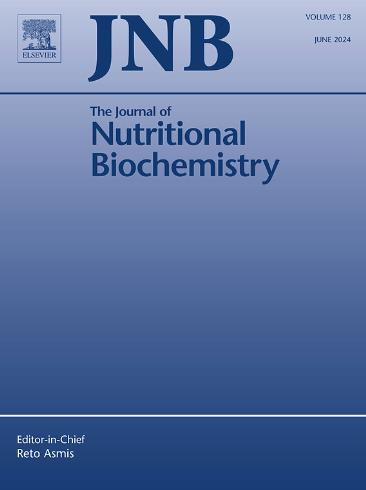Intake of neutral core human milk oligosaccharides (HMOs) during early life improves long-term bone quality
IF 4.8
2区 医学
Q1 BIOCHEMISTRY & MOLECULAR BIOLOGY
引用次数: 0
Abstract
Infancy is a key period for bone growth, determining bone strength later in life. Studies have provided early insights into the role that human milk oligosaccharides (HMOs) may play in growth, potentially through their effects on the microbiome. However, focus was on sialylated HMOs whereas neutral core HMOs represent the most abundant class in human breast milk. We explored impact on bone quantity, quality and strength in 1year old female minipigs exposed to neutral HMOs during preweaning. Milk formula led to significant lower bone mineral density and quality compared to sow-fed (positive control). Milk formula enriched in neutral HMOs led to higher tibia bone density, structure and matrix quality compared to milk formula, leading to similar bone strength as in naturally sow-fed, whereas sialylated HMOs was not able to significantly differentiate than milk formulae. We identify a specific correlation between neutral HMOs, bone and microbiome, with the novel taxonomies Turicibacter sanguinis and Paraprevotella clara associating with HMO-mediated bone strength. This study provides important insights on the role of different HMO subtypes on bone health and possible associated adaptations in microbiome taxa, providing perspectives for new nutritional solutions for bone growth in early life.
在生命早期摄入中性核心人乳寡糖(HMOs)可改善长期骨质量。
婴儿期是骨骼生长的关键时期,决定了以后的骨骼强度。研究已经提供了关于母乳低聚糖(HMOs)可能在生长中发挥作用的早期见解,可能是通过它们对微生物组的影响。然而,重点是唾液化的HMOs,而中性核心HMOs代表了人类母乳中最丰富的一类。本研究探讨了断奶前中性HMOs对1岁雌性迷你猪骨量、骨质量和骨强度的影响。与母猪相比,配方奶的骨密度和骨质显著降低(阳性对照)。与牛奶配方相比,富含中性HMOs的奶粉配方的胫骨骨密度、结构和基质质量更高,其骨强度与天然母猪喂养的相似,而唾液化HMOs与牛奶配方的差异不显著。我们确定了中性hmo,骨骼和微生物组之间的特定相关性,与hmo介导的骨强度相关的新分类是血结核菌和clara旁旋菌。该研究为不同HMO亚型在骨骼健康中的作用以及微生物群分类群中可能的相关适应提供了重要见解,为早期骨骼生长提供了新的营养解决方案。
本文章由计算机程序翻译,如有差异,请以英文原文为准。
求助全文
约1分钟内获得全文
求助全文
来源期刊

Journal of Nutritional Biochemistry
医学-生化与分子生物学
CiteScore
9.50
自引率
3.60%
发文量
237
审稿时长
68 days
期刊介绍:
Devoted to advancements in nutritional sciences, The Journal of Nutritional Biochemistry presents experimental nutrition research as it relates to: biochemistry, molecular biology, toxicology, or physiology.
Rigorous reviews by an international editorial board of distinguished scientists ensure publication of the most current and key research being conducted in nutrition at the cellular, animal and human level. In addition to its monthly features of critical reviews and research articles, The Journal of Nutritional Biochemistry also periodically publishes emerging issues, experimental methods, and other types of articles.
 求助内容:
求助内容: 应助结果提醒方式:
应助结果提醒方式:


